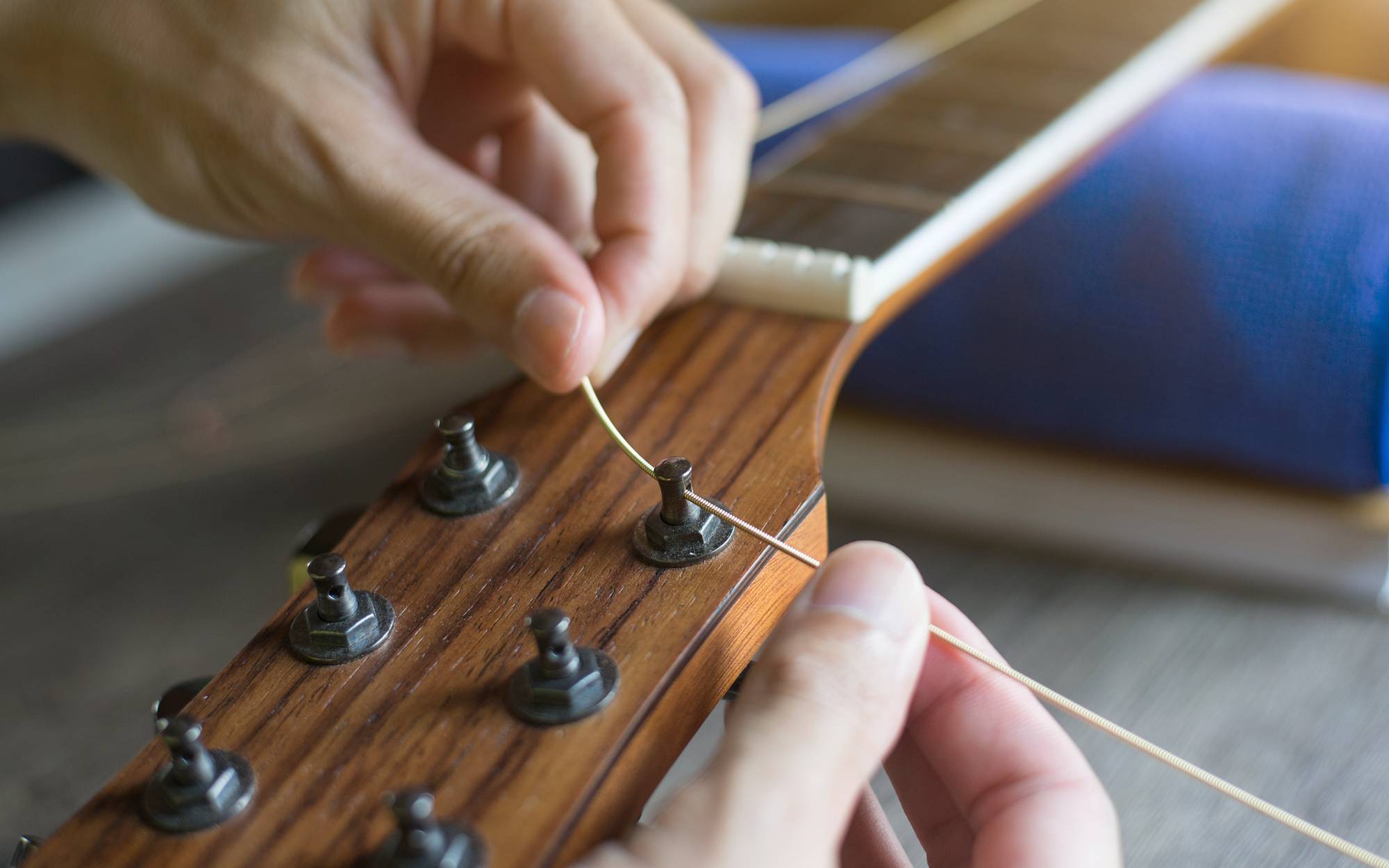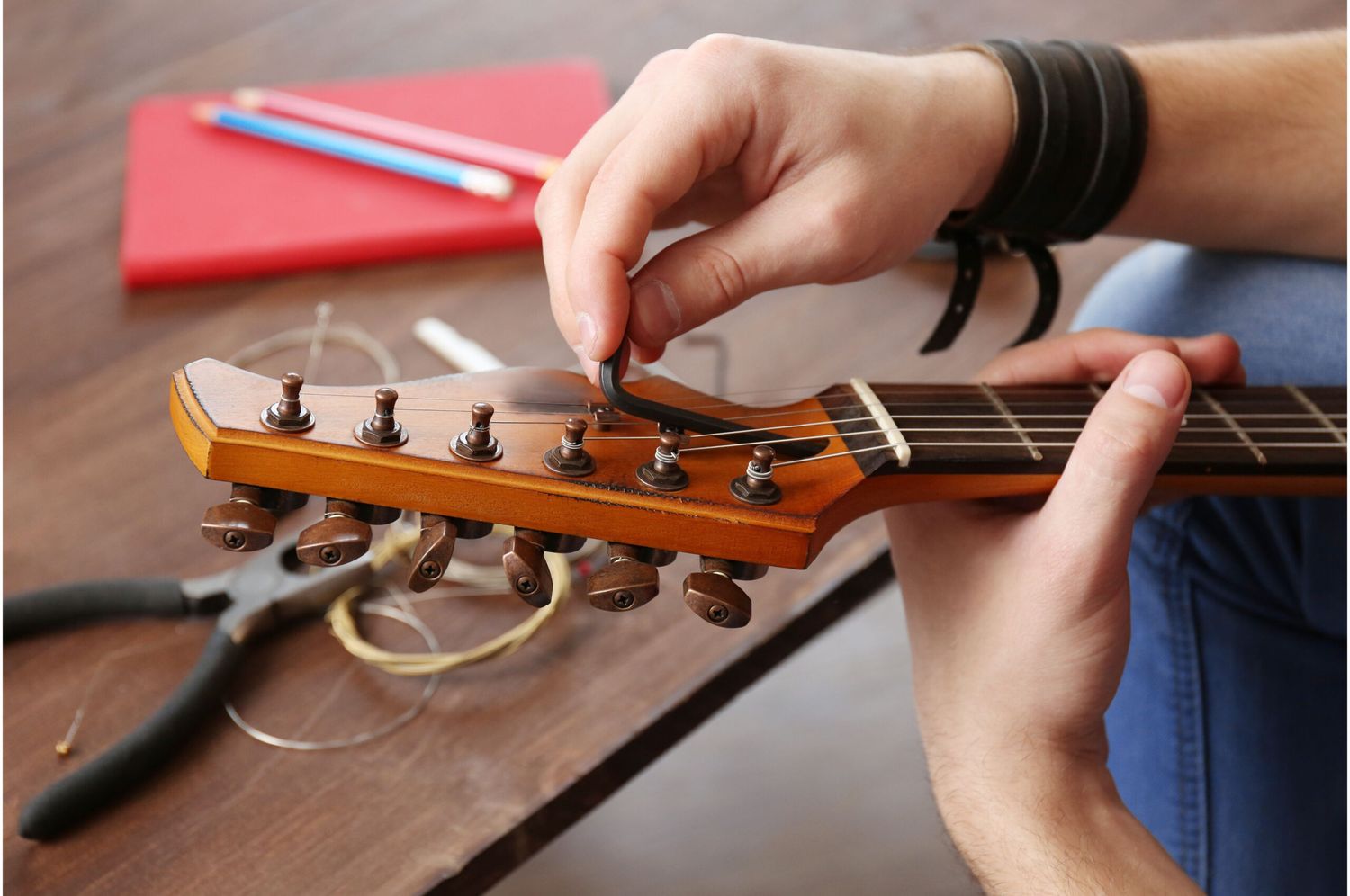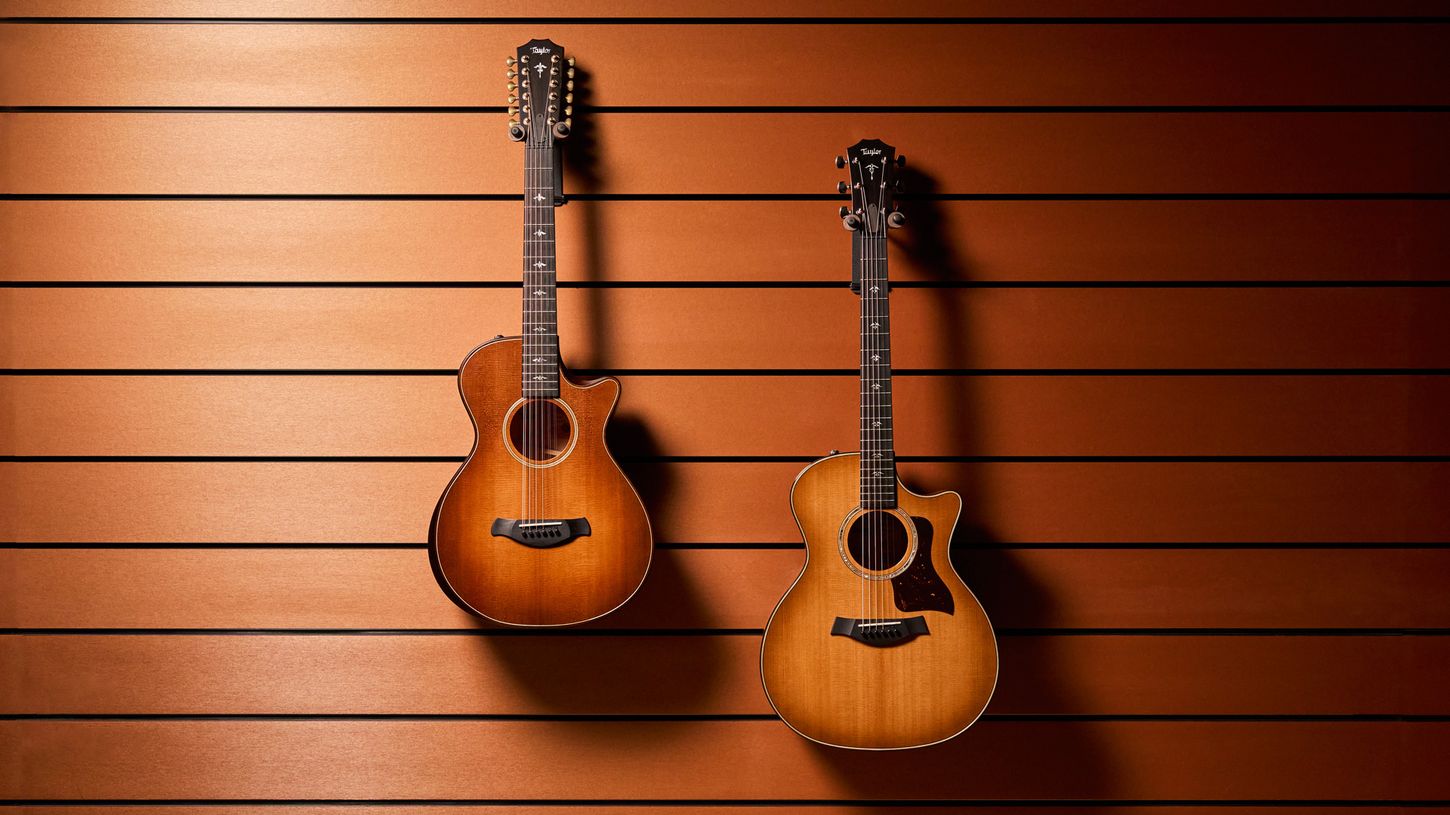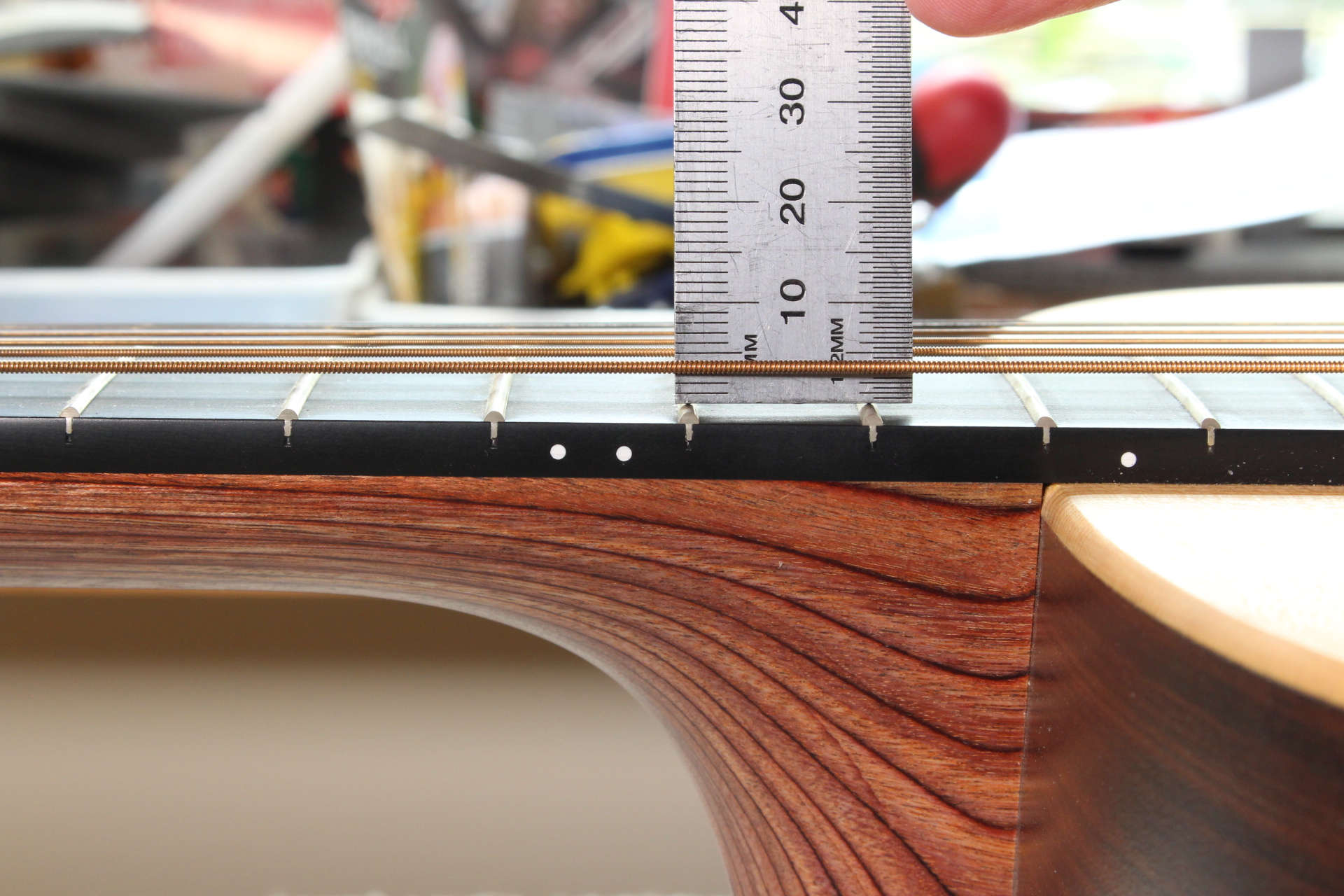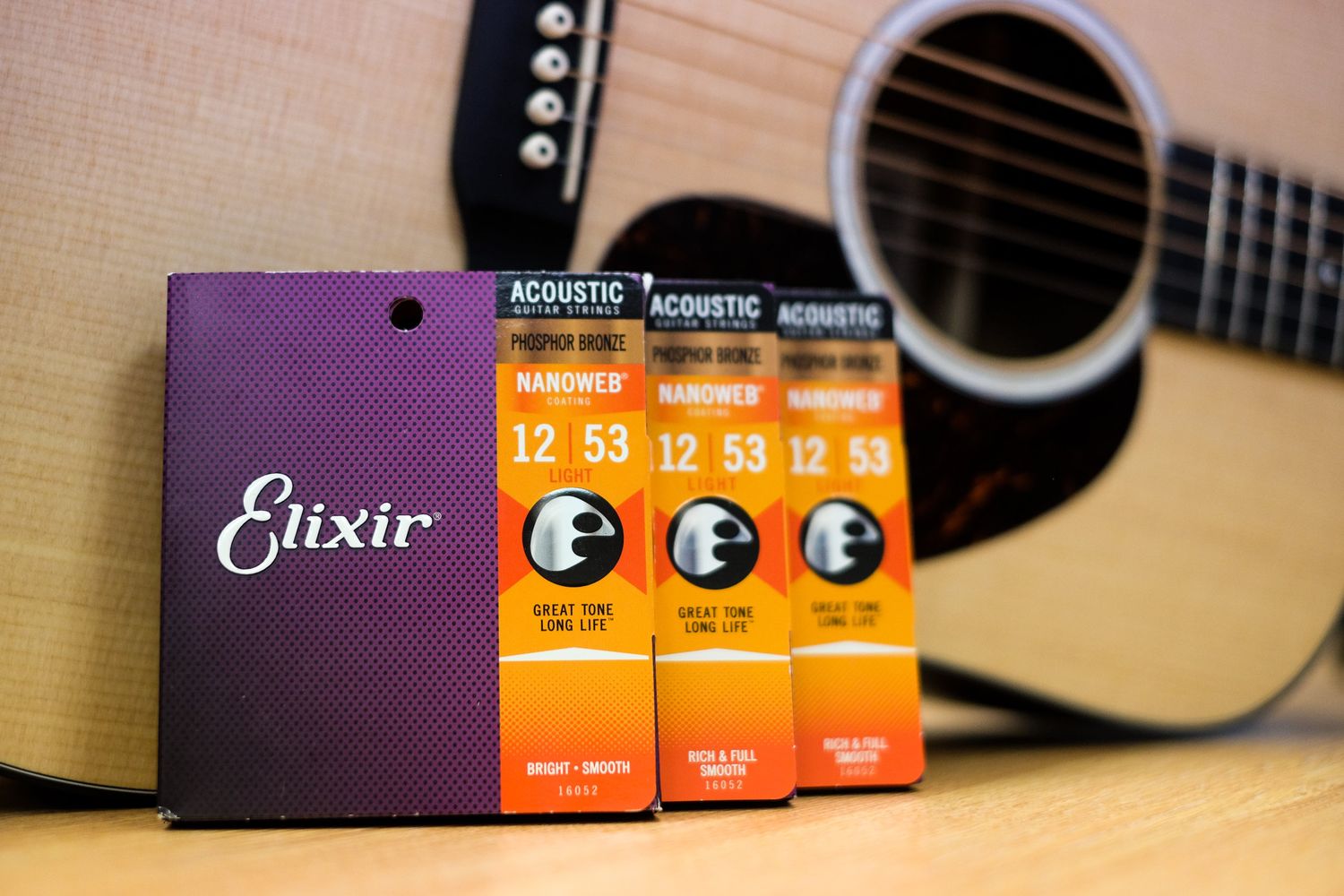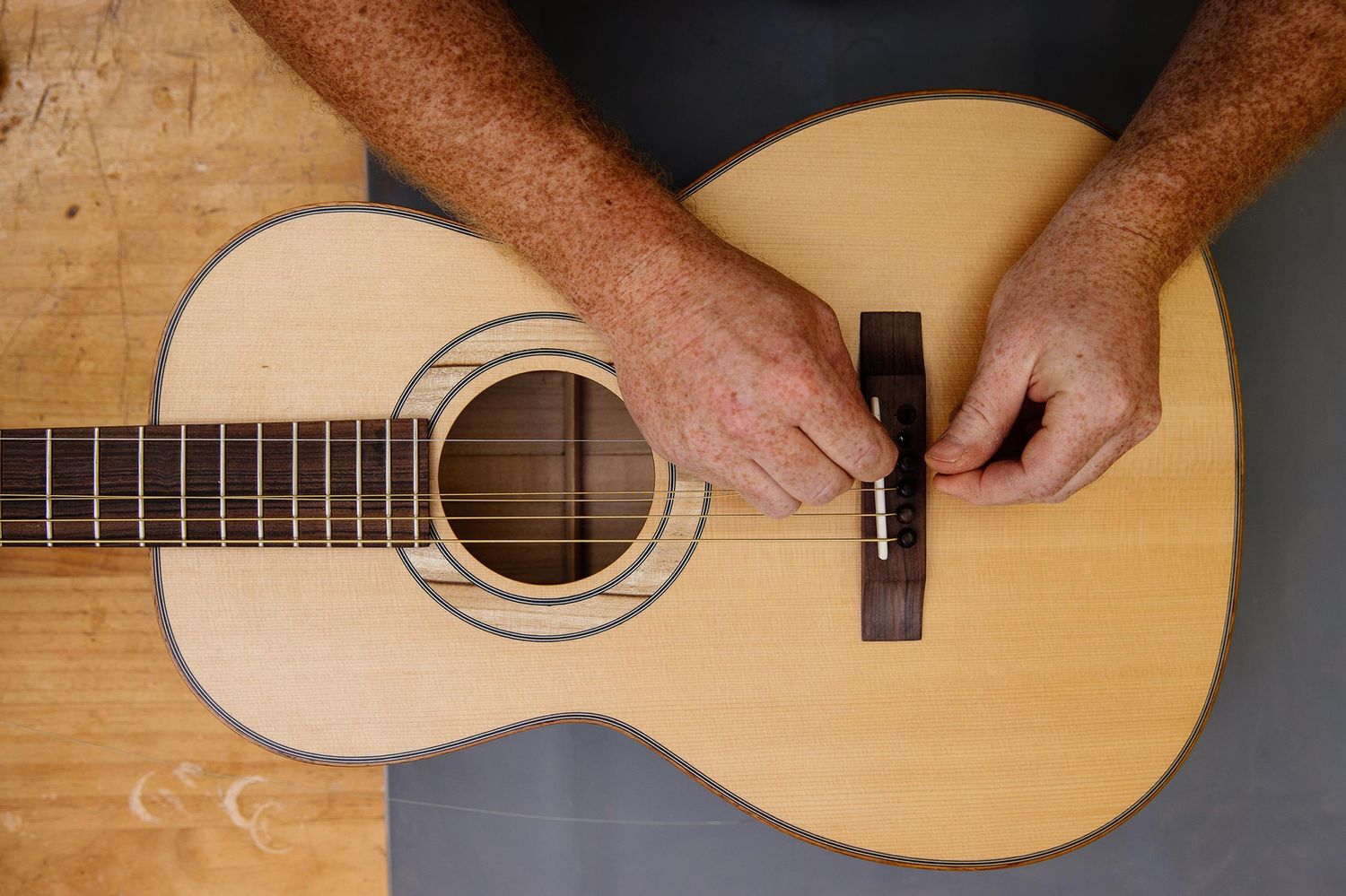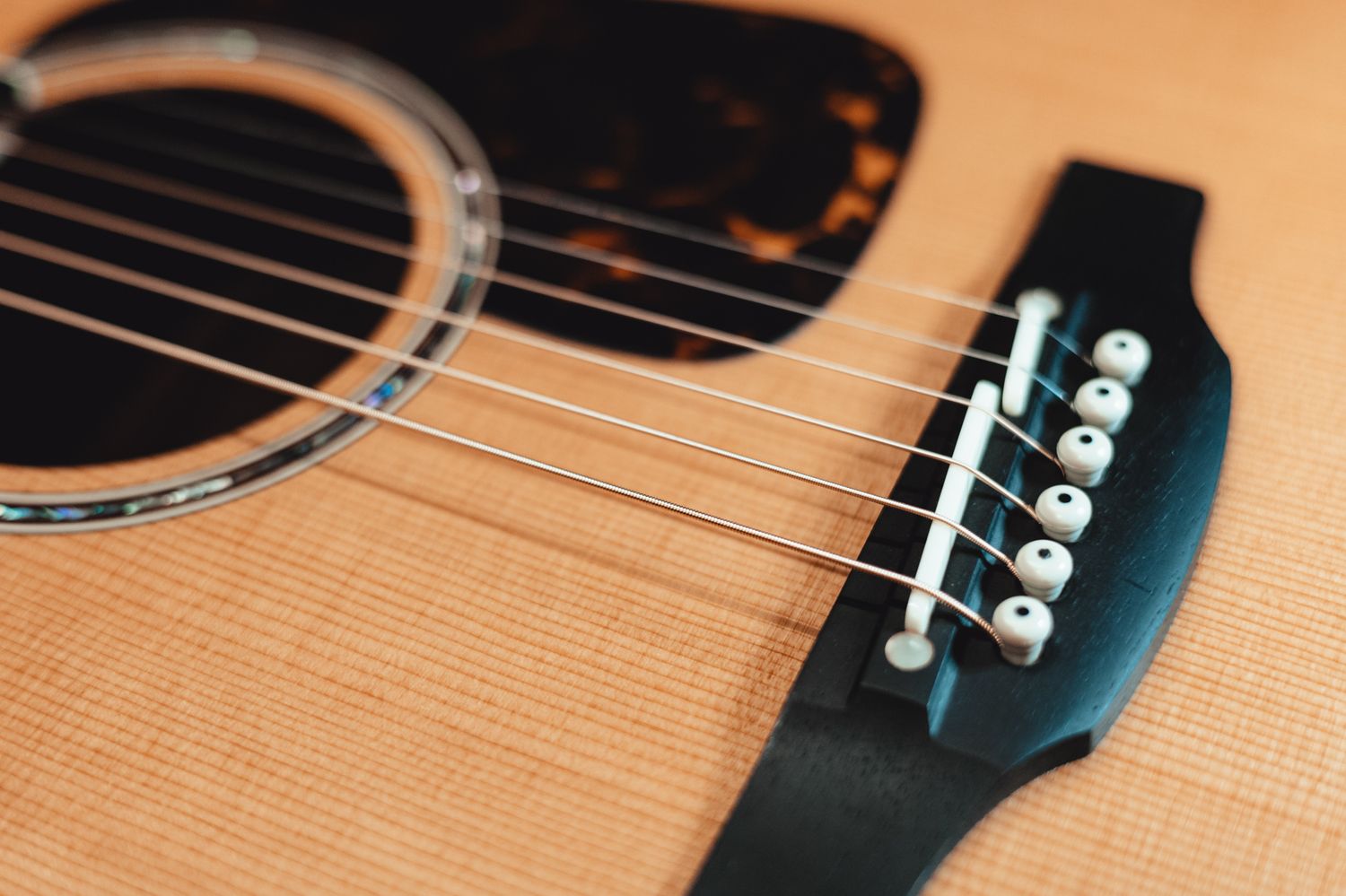Home>Production & Technology>Acoustic>How Often Should You Change Guitar Strings On Acoustic
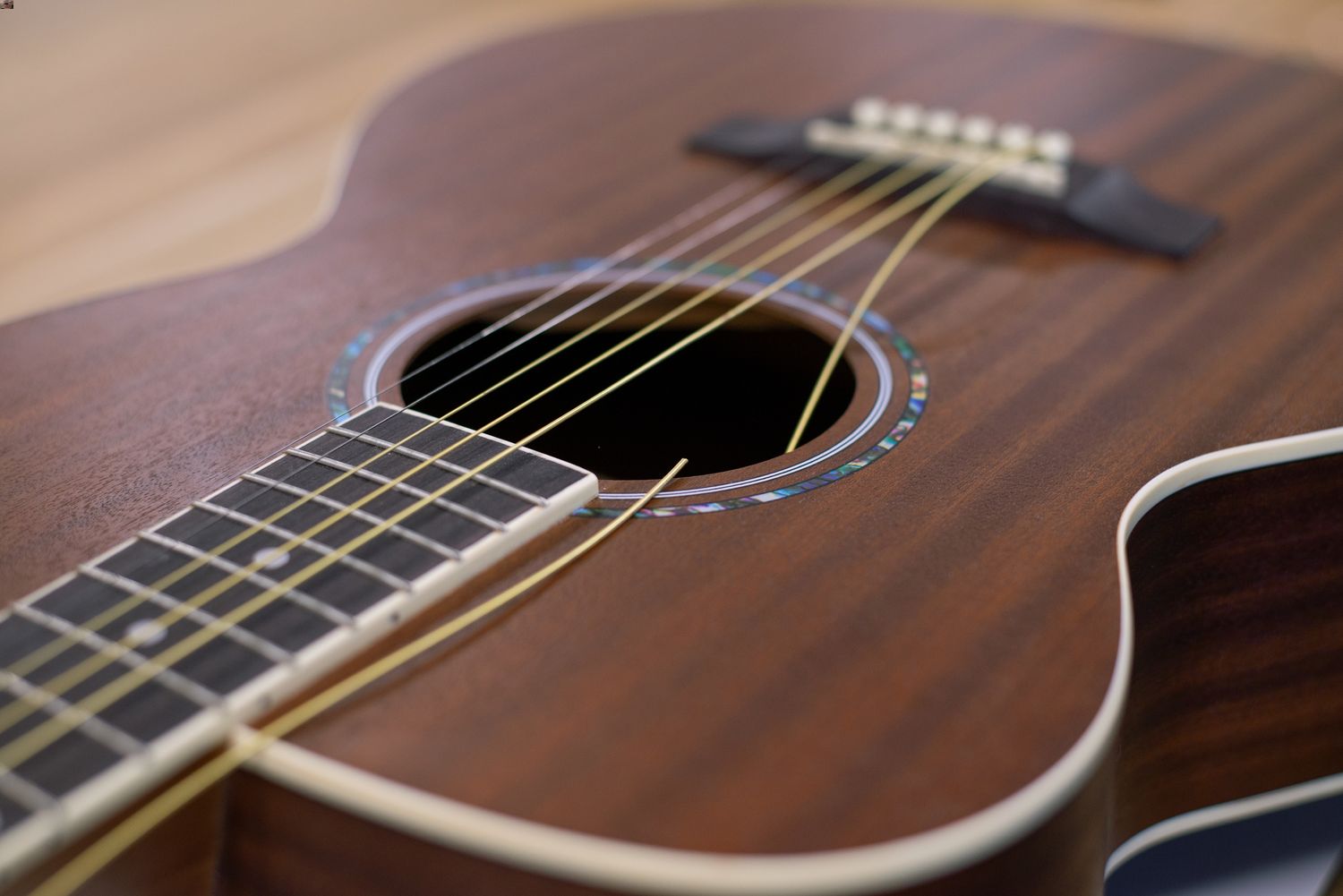

Acoustic
How Often Should You Change Guitar Strings On Acoustic
Published: March 11, 2024
Learn how often to change guitar strings on acoustic instruments for optimal sound quality and performance. Discover the best maintenance schedule for your acoustic guitar.
(Many of the links in this article redirect to a specific reviewed product. Your purchase of these products through affiliate links helps to generate commission for AudioLover.com, at no extra cost. Learn more)
Table of Contents
Introduction
Guitar strings are the heart and soul of your acoustic guitar. They are responsible for producing the beautiful melodies and harmonies that resonate with our emotions. Whether you're a seasoned musician or a beginner, understanding the importance of maintaining and changing your guitar strings is crucial for achieving the best sound and playability.
As a guitarist, you may have wondered, "How often should I change my guitar strings?" This question is a common concern among players, as the frequency of string changes can significantly impact the overall sound and feel of the instrument. The answer to this question depends on various factors, including your playing style, the type of strings you use, and the environmental conditions in which you play.
In this comprehensive guide, we will delve into the factors that influence the lifespan of guitar strings, the telltale signs that indicate when it's time for a change, the recommended frequency for changing strings, and valuable tips for maintaining the quality and longevity of your guitar strings. By the end of this article, you will have a clear understanding of how to optimize the performance of your acoustic guitar through proper string maintenance and replacement.
Let's embark on this journey to unravel the secrets of guitar string care and discover the best practices for achieving exceptional sound quality and playability. Whether you're a strummer, a fingerstyle enthusiast, or an avid performer, the insights shared in this guide will empower you to elevate your musical experience and keep your acoustic guitar sounding its best.
Factors to Consider
When determining the frequency of changing guitar strings, several key factors come into play. Understanding these factors is essential for making informed decisions about string maintenance and replacement. Let's explore the critical considerations that influence the lifespan and performance of your acoustic guitar strings.
1. Playing Style:
Your playing style has a significant impact on the wear and tear of guitar strings. If you're an aggressive strummer or frequently bend notes, your strings will experience greater stress and may lose their tonal quality more quickly. On the other hand, if you primarily engage in gentle fingerpicking, your strings may last longer before showing signs of deterioration.
2. String Material:
The material composition of guitar strings plays a crucial role in their longevity. Different materials, such as bronze, phosphor bronze, and coated strings, offer varying degrees of durability and resilience to corrosion. For example, coated strings are designed to resist moisture and skin oils, thereby extending their lifespan compared to uncoated strings.
3. Environmental Conditions:
The environment in which you play your acoustic guitar can impact the condition of the strings. High humidity levels can accelerate corrosion, particularly on uncoated strings, while extreme dryness may cause strings to become brittle. Additionally, exposure to dust, dirt, and sweat can contribute to the accumulation of grime on the strings, affecting their performance.
4. Frequency of Playing:
The frequency with which you play your guitar also influences how often you should change the strings. Regular practice and performance sessions can expedite the natural wear of the strings, leading to a decrease in tonal clarity and intonation. Conversely, infrequent playing may allow the strings to maintain their quality for a longer duration.
5. Personal Preference:
Ultimately, your personal preference and discernment as a guitarist play a role in determining when to change your guitar strings. Some players may be more sensitive to subtle changes in tone and responsiveness, prompting them to change strings more frequently to uphold their desired sound quality. Others may be comfortable with a slightly worn-in feel and opt to prolong the lifespan of their strings.
By taking these factors into account, you can develop a holistic understanding of the variables that influence the maintenance and replacement of your guitar strings. This awareness will empower you to make informed decisions tailored to your playing habits, environmental conditions, and sonic preferences, ultimately enhancing your overall musical experience.
Signs that Your Guitar Strings Need Changing
Recognizing the signs that indicate when your guitar strings require changing is essential for maintaining optimal sound quality and playability. By being attuned to these indicators, you can proactively address any degradation in tone and performance, ensuring that your acoustic guitar consistently delivers a rich and vibrant sound. Here are the key signs that signal the need for a string change:
-
Tonal Dullness: Over time, guitar strings accumulate dirt, sweat, and oils from your fingertips, leading to a gradual loss of brightness and clarity in their tone. If you notice that your strings sound muffled or lack the crispness they once had, it's a clear indication that they have become worn and require replacement.
-
Intonation Issues: As guitar strings age, they may develop intonation problems, causing notes to sound out of tune even when the instrument is properly tuned. If you find that certain fretted notes or chords consistently sound off-pitch despite your tuning efforts, it's a strong indication that the strings have lost their ability to maintain accurate intonation.
-
Visible Wear and Corrosion: Inspecting the physical condition of your guitar strings can reveal telltale signs of wear and corrosion. Look for discoloration, rust, or visible grooves on the strings, particularly in areas where they come into contact with the frets. These visual cues indicate that the strings have deteriorated and are no longer capable of producing optimal sound.
-
Reduced Sustain and Resonance: A noticeable decrease in sustain and resonance is a clear sign that your guitar strings are past their prime. When strings lose their vibrancy and fail to sustain notes for an adequate duration, it detracts from the overall expressiveness and depth of your playing. This diminished sustain is a strong indicator that the strings are due for replacement.
-
Frequent Breakage: If you find that your guitar strings are breaking more frequently than usual, it's a compelling sign that they have weakened and are susceptible to further damage. Whether it's due to metal fatigue or excessive wear, frequent string breakage is a clear indication that a fresh set of strings is necessary to ensure reliability and stability during playing.
By remaining vigilant for these signs, you can proactively address the condition of your guitar strings and take timely action to maintain the exceptional sound quality and responsiveness of your acoustic instrument. Being attuned to these indicators empowers you to uphold the integrity of your musical expression and enjoy a consistently rewarding playing experience.
Recommended Frequency for Changing Guitar Strings
Determining the ideal frequency for changing guitar strings is a nuanced process that involves balancing various factors to ensure optimal sound quality and playability. While there is no one-size-fits-all answer to how often strings should be changed, several guidelines can help you gauge when it's time for a fresh set.
For casual players or those who engage in light practice sessions, changing guitar strings every 3 to 6 months is generally sufficient to maintain satisfactory performance. This timeframe allows for the gradual buildup of grime, sweat, and oils on the strings to be mitigated before it significantly impacts their tonal clarity and responsiveness. Additionally, infrequent players may find that their strings retain their integrity for a longer duration, thus extending the recommended replacement interval.
On the other hand, avid musicians and performers who regularly practice, record, or play live shows may benefit from changing their guitar strings more frequently, typically every 1 to 2 months. The heightened playing frequency exposes the strings to greater stress and wear, accelerating the loss of brightness and sustain. By adhering to a more frequent string replacement schedule, these dedicated players can ensure that their instrument consistently delivers the vibrant, articulate sound they desire.
Furthermore, the specific demands of your playing style and the genre of music you perform can influence the recommended frequency for changing guitar strings. If you favor aggressive strumming, vigorous bending, or heavy palm muting, your strings are subjected to increased tension and abrasion, warranting more frequent changes to uphold their tonal integrity. Similarly, genres that emphasize intricate fingerpicking or intricate chord voicings may benefit from more frequent string changes to preserve the nuanced nuances and articulation essential to these styles.
It's important to note that environmental conditions also play a pivotal role in determining how often guitar strings should be changed. High humidity, exposure to perspiration, and dusty performance environments can expedite the degradation of strings, necessitating more frequent replacements to counteract the adverse effects of these factors.
Ultimately, the recommended frequency for changing guitar strings is a dynamic consideration that hinges on a combination of playing habits, environmental influences, and sonic expectations. By attentively monitoring the signs of string wear and tailoring your replacement schedule to align with your specific musical pursuits, you can uphold the exceptional sound quality and playability of your acoustic guitar, ensuring that it remains a steadfast companion in your musical journey.
Tips for Maintaining Guitar Strings
Maintaining your guitar strings is essential for preserving their longevity and ensuring consistent performance. By implementing proper care and maintenance practices, you can extend the lifespan of your strings while optimizing their tonal clarity and playability. Here are valuable tips to help you maintain your guitar strings effectively:
-
Wipe Down Your Strings After Playing: After each practice session or performance, use a clean, lint-free cloth to wipe down your guitar strings thoroughly. This simple yet effective practice helps remove sweat, oils, and debris that accumulate during playing, preventing the buildup of grime that can compromise the strings' vibrancy and responsiveness.
-
Use String Cleaner and Conditioner: Regularly treating your guitar strings with a high-quality string cleaner and conditioner can significantly enhance their durability and tone. These specialized products help remove stubborn residue and protect the strings from corrosion, preserving their brightness and extending their lifespan.
-
Trim Your Fingernails: If you play with your fingers, keeping your fingernails neatly trimmed can prevent unnecessary wear and tear on the strings. Long or jagged fingernails can cause premature grooving and damage to the strings, affecting their sound quality and smoothness.
-
Store Your Guitar Properly: When not in use, store your guitar in a suitable case or stand to shield it from environmental elements that can degrade the strings. Maintaining stable humidity levels and protecting the instrument from dust and direct sunlight can help preserve the integrity of the strings over time.
-
Stretch New Strings Thoroughly: When installing a new set of strings, take the time to stretch them gently and tune them repeatedly to stabilize their tension. This process helps minimize tuning instability and ensures that the strings settle into their optimal playing condition, reducing the likelihood of premature breakage.
-
Avoid Excessive Tuning Fluctuations: Minimize frequent and drastic tuning adjustments, as excessive tension changes can strain the strings and lead to diminished stability and intonation. Gradual, incremental tuning adjustments are preferable to mitigate unnecessary stress on the strings.
-
Monitor Nut and Bridge Condition: Periodically inspect the nut and bridge of your guitar to ensure that they are free from sharp edges or burrs that can cause abrasion and premature wear on the strings. Smooth, well-maintained contact points contribute to the longevity and performance of the strings.
By incorporating these maintenance tips into your guitar care routine, you can safeguard the quality and resilience of your strings, allowing them to consistently deliver the vibrant, articulate sound that enriches your musical expression. With attentive maintenance, your guitar strings will remain a reliable conduit for your creativity and passion, empowering you to explore new musical horizons with confidence and clarity.
Conclusion
In conclusion, the care and maintenance of your acoustic guitar strings are pivotal aspects of nurturing the instrument's sonic potential and playability. By considering the interplay of factors such as playing style, string material, environmental conditions, and personal preferences, you can develop a holistic approach to string maintenance that aligns with your musical pursuits and sonic expectations.
Recognizing the signs that indicate when your guitar strings require changing empowers you to proactively address any degradation in tone and performance. Tonal dullness, intonation issues, visible wear and corrosion, reduced sustain and resonance, and frequent breakage serve as clear signals that prompt timely string replacement, ensuring that your acoustic guitar consistently delivers a rich and vibrant sound.
Determining the ideal frequency for changing guitar strings involves a nuanced balance of playing habits, environmental influences, and sonic expectations. Whether you're a casual player or a dedicated performer, tailoring your string replacement schedule to align with your specific musical pursuits is essential for upholding the exceptional sound quality and playability of your acoustic guitar.
Furthermore, implementing proper care and maintenance practices, such as wiping down your strings after playing, using string cleaner and conditioner, and stretching new strings thoroughly, can significantly extend the lifespan of your strings while optimizing their tonal clarity and playability. These proactive measures contribute to the longevity and resilience of your strings, allowing them to consistently deliver the vibrant, articulate sound that enriches your musical expression.
In essence, the journey of maintaining and changing your guitar strings is a harmonious blend of art and science, where attentive care and informed decision-making converge to elevate the sonic potential of your acoustic instrument. By embracing these best practices and remaining attuned to the nuances of string maintenance, you can embark on a musical odyssey filled with resonant melodies, expressive harmonies, and unwavering playability, ensuring that your acoustic guitar remains a steadfast companion in your creative endeavors.

